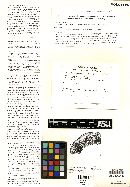
Consortium of Lichen Herbaria
- building a Global Consortium of Bryophytes and Lichens as keystones of cryptobiotic communities -
- Home
- Search
- Images
- Species Checklists
- US States: O-Z >
- US National Parks
- Central America
- South America
- US National Parks
- Southern Subpolar Region
|
|
|
|
Family: Lecanoraceae
[Lecanora comoduensis T.H. Nash & Hertel] |
Nash, T.H., Ryan, B.D., Gries, C., Bungartz, F., (eds.) 2004. Lichen Flora of the Greater Sonoran Desert Region. Vol 2. Life habitat: ± lichenicolous initially, soon lichenized Thallus: crustose, usually composed of scattered, isolated, subpeltate areoles, occasionally areoles sufficiently dense so as to appear part of a bullate, partially continuous thallus areoles: affixed to substrate over most of lower surface by short hyphae with distinct, narrow, marginal zone, free from substrate thereby forming constricted base of subpeltate areoles, up to 3.5 mm in diam., 1-2 mm thick surface: smooth except where crystals become superficially emergent as viewed under stereomicroscope, pale whitish gray, esorediate cortex: fairly uniformly 20-30 µm thick, composed of compressed hyphae with subglobular to slightly elongated cells 3-5 µm in diam. medulla: composed of loosely interwoven hyphae c. 4.5 µm in diam. with extremely thick walls (lumina c. 1 µm diam.), large, irregular crystals, up to 150 µm in diam. scattered throughout; algal layer: extremely variable, composed of few, scattered, green, Trebouxia-like cells below apothecia, but under upper cortex algae continuous, fomring layer up to 150 µm thick Apothecia: usually one (rarely several) per areole, immersed as in typical Aspicilia species, up to 1.5 mm in diam. disc: typically black but becoming brown with age, becoming slightly convex but not emergent from thallus, surface slightly to moderately pruinose parathecium: reduced to a few indistinct cells (cryptolecanorine) epihymenium: brown with tinge of olive, superficially similar to that of some species of Aspicilia but lacking the N+ green reaction, c. 10 µm thick hymenium: hyaline, 42-52 µm high, I+ blue, clearly delimited from a hyaline subhymenium; paraphyses: c. 2 µm in diam., c. 6 cells long, usually unbranched, rarely anastomosing; apical cells: slightly swollen, 3-4.5 µm in diam., conglutinated asci: clavate, 8 spored ascospores: hyaline, simple, ellipsoid, usually with centrally located plasma bridge, without halo, 8-11 x 4-5.5 µm Pycnidia: not observed Spot tests: cortex: K+ yellow; medulla: K+ yellow to orange, P+ yellow (to orange), C-, KC- Secondary metabolites: atranorin and norstictic acid. Substrate and ecology: on hard, acidic rocks, such as basalt, often initially growing on other lichens World and Sonoran distribution: scattered localities from 100 to 1000 m from Arizona, California, Baja California, Baja California Sur, Chihuahua, and Sonora. |
Powered by Symbiota
















